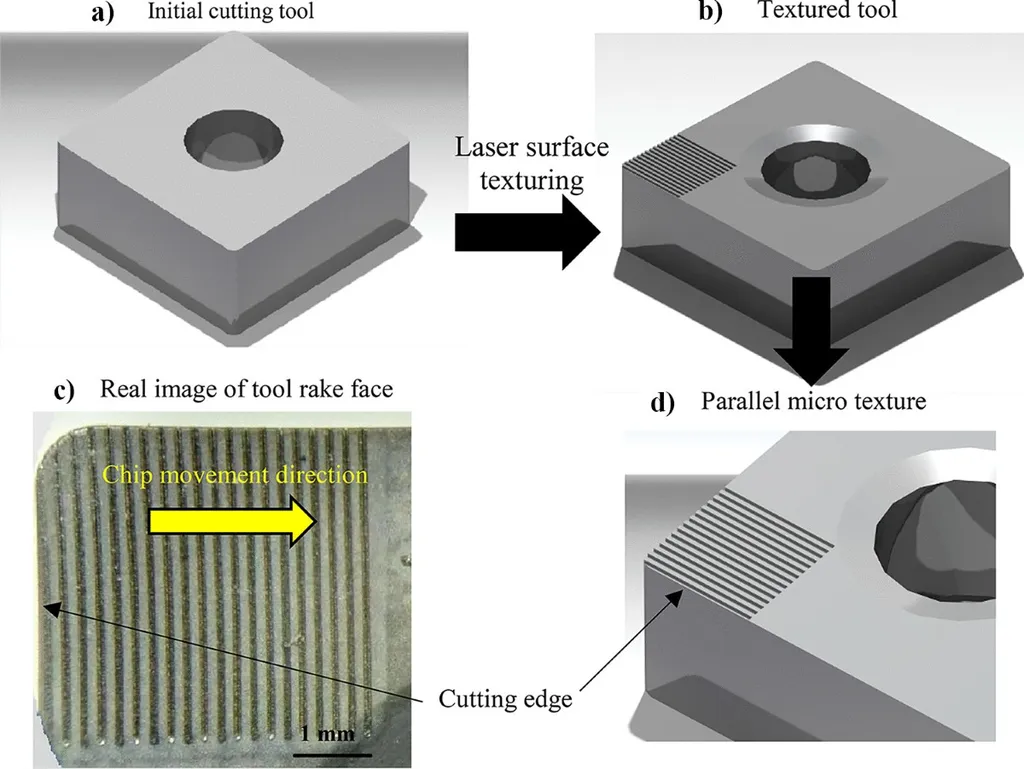In the relentless pursuit of efficiency and quality in industrial manufacturing, a groundbreaking study led by Xu Tiantian from the School of Mechanical and Vehicle Engineering at Changchun University has unveiled a novel approach to enhance the machining of aluminum alloys. Published in the esteemed journal *Mechanics & Industry* (translated as *Mechanics and Industry*), this research could potentially revolutionize the energy sector, where aluminum alloys are extensively used.
Aluminum alloys are prized for their lightweight and durable properties, making them indispensable in sectors like aerospace, automotive, and renewable energy. However, machining these materials often presents challenges such as high cutting forces, poor surface quality, and chip wrapping. Xu Tiantian and his team have tackled these issues head-on by innovatively designing micro-textured tools that significantly improve cutting performance.
The researchers created two types of micro-groove textures on the tool surface, one parallel and the other perpendicular to the main cutting edge. These textures, with precise dimensions of 50 micrometers in width and depth, and spaced 200 micrometers apart, were meticulously designed based on the natural flow direction of chips. “By optimizing the orientation of these micro-textures, we aimed to enhance heat dissipation, reduce friction, and improve chip removal performance,” explained Xu Tiantian.
Through finite element simulation and actual cutting experiments, the team evaluated the impact of these micro-textures on cutting force, temperature, stress, and chip morphology. The results were striking. The micro-textured tools demonstrated a substantial reduction in cutting force, stress, and temperature, leading to improved surface quality and optimized chip morphology.
The study took a step further by integrating composite solid lubricants into the micro-grooves, developing self-lubricating tools that performed exceptionally well. These tools reduced cutting force by up to 20.39%, improved surface roughness to an impressive 1.421 micrometers, and optimized chip morphology. “The synergistic effects of cutting speed and lubrication conditions with micro-textured tools have opened new avenues for efficient and high-quality machining of aluminum alloys,” noted Xu Tiantian.
The implications of this research are far-reaching, particularly for the energy sector. As the demand for lightweight and durable materials continues to grow, the ability to machine aluminum alloys with greater efficiency and precision will be crucial. The technology developed by Xu Tiantian and his team could enhance the production of components for renewable energy systems, such as wind turbines and solar panels, as well as improve the manufacturing processes for electric vehicles and aerospace applications.
This study not only addresses immediate industrial challenges but also paves the way for future advancements in machining technology. By combining micro-texturing with solid lubricants, the researchers have demonstrated a novel approach to optimizing cutting performance. As the energy sector continues to evolve, the insights gained from this research could shape the development of next-generation machining tools and techniques, driving innovation and efficiency in industrial manufacturing.
In the words of Xu Tiantian, “This technology provides an effective solution for enhancing the efficiency and quality of aluminum alloy machining, and we believe it has the potential to make a significant impact in various industries.” With the publication of this research in *Mechanics & Industry*, the scientific community and industry professionals alike are poised to benefit from these groundbreaking findings.

